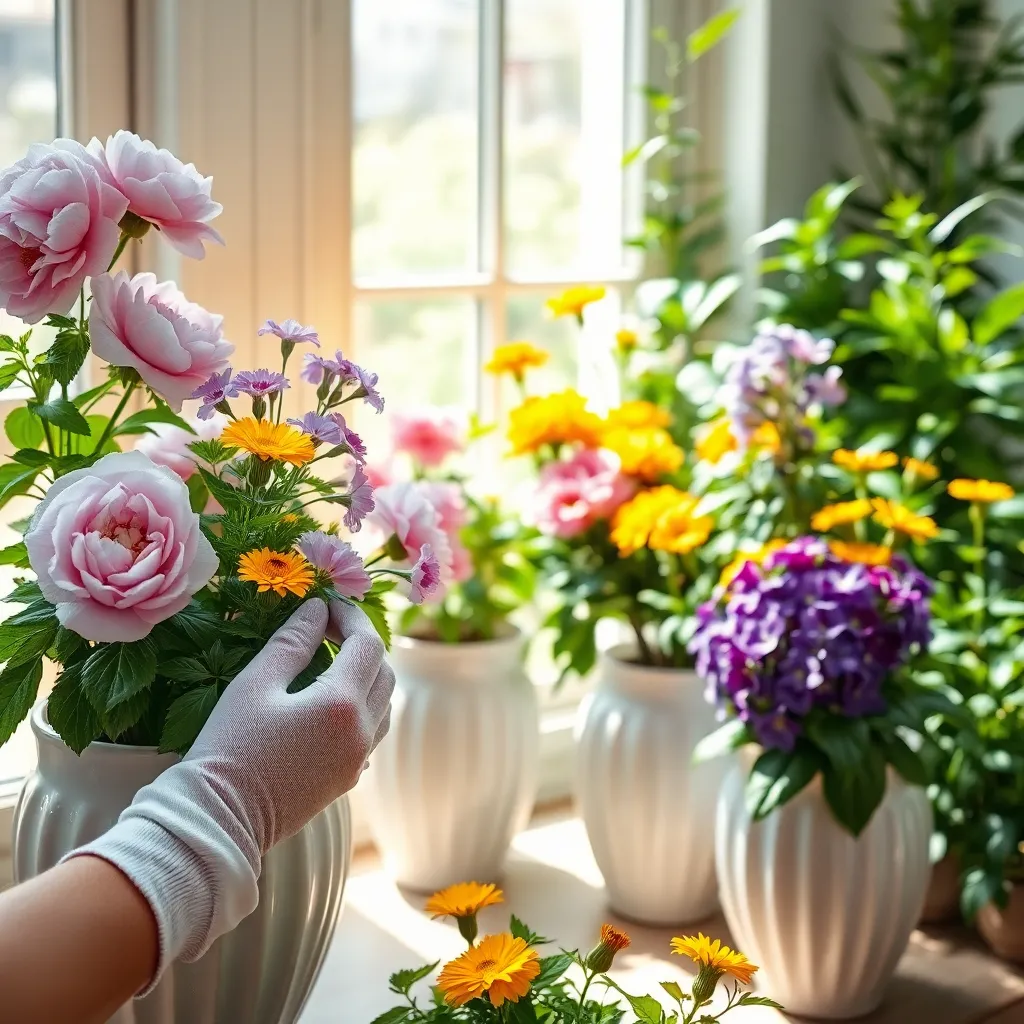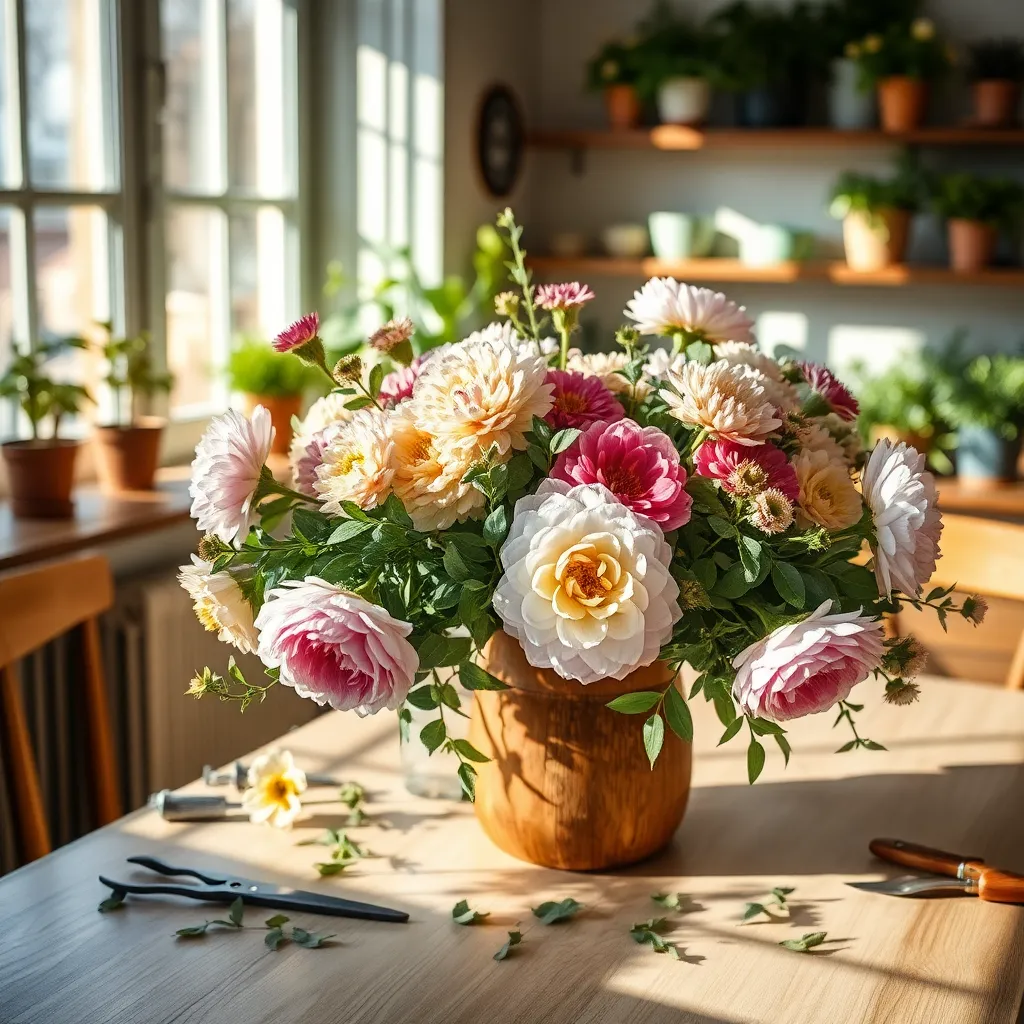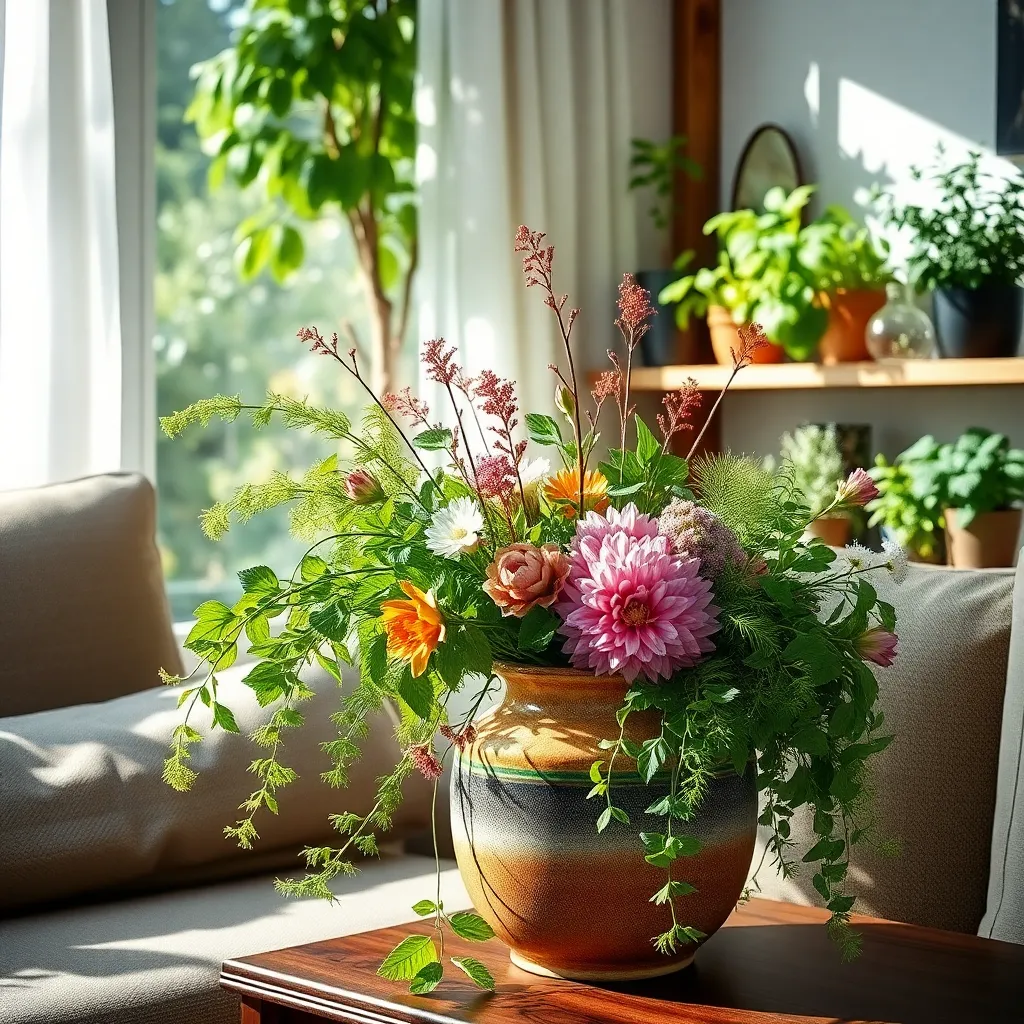Creating flower arrangements for your indoor garden is like painting with nature’s palette—each bloom is a brushstroke that adds color and vitality to your home. Whether you’re a green-thumbed virtuoso or taking your first steps into the world of gardening, crafting these living artworks is both an art and a science that anyone can master. In this article, we’ll explore the transformative power of indoor flower arrangements and how they can uplift your space and spirit.
For seasoned gardeners, flower arrangements offer a rewarding opportunity to showcase your favorite blooms in new and creative ways. You’ll learn how to select the perfect varieties that thrive indoors, ensuring your arrangements are not only beautiful but sustainable. Beginners will find this an inviting gateway into the joys of gardening, as we’ll guide you through the process of choosing easy-to-care-for plants that promise stunning results with minimal fuss.
By the end of this journey, you’ll have the skills to design arrangements that reflect your personal style and the changing seasons. We’ll delve into techniques such as color harmony, texture balance, and the art of layering to make your creations truly sing. Get ready to transform your indoor spaces into lush sanctuaries that bring the beauty of the garden into every corner of your home.
Choosing Ideal Indoor Flowers

When choosing flowers for your indoor garden, consider the lighting conditions in your home. Low-light areas are perfect for plants like peace lilies and pothos, which thrive without direct sunlight.
For rooms with bright, indirect light, opt for flowering plants such as orchids and African violets. These beauties will flourish if you keep their soil slightly moist and provide them with a balanced liquid fertilizer every four to six weeks.
Beginners should start with hardy plants that are forgiving to care for, such as the ZZ plant or spider plant. These varieties require less frequent watering and can adapt to a variety of indoor environments.
Experienced gardeners might enjoy the challenge of growing indoor roses or gardenias, which need more specific care. Ensure they receive sufficient humidity and are planted in well-draining soil to prevent root rot.
- Use a potting mix specifically designed for indoor flowers to provide the right nutrients.
- Regularly check the top inch of soil for dryness before watering to avoid overwatering.
- Rotate plants weekly to ensure even light exposure and promote balanced growth.
Designing Harmonious Color Schemes

Creating harmonious color schemes for your indoor garden can transform your space into a vibrant oasis. Start by selecting a color palette that complements your indoor environment, focusing on three to four main colors to maintain cohesion.
Consider the natural light available in your home as it can influence how colors appear. In rooms with abundant sunlight, choose flowers with deep and bold hues like purples and reds, while in shadier areas, opt for brighter shades such as yellows and whites to add luminosity.
For beginners, a simple yet effective approach is to use the color wheel. Selecting complementary colors, such as orange and blue, can create a striking contrast, while analogous colors like pinks and purples offer a more subdued and serene look.
Advanced gardeners might experiment with monochromatic schemes using various shades of the same color. This technique can be especially impactful with plants like orchids, which come in a wide range of color intensities and patterns, offering depth and interest.
For maintenance, ensure your plants receive the right care to keep their colors vibrant. Regularly water your plants according to their specific needs, ensuring that the soil remains moist but not waterlogged, which helps prevent root rot and keeps blooms healthy.
Arranging Flowers for Aesthetic Appeal

Creating a stunning floral arrangement for your indoor garden requires a thoughtful approach to both plant selection and placement. Start by choosing a variety of flowers with different heights and textures to create visual interest and depth in your arrangement.
Consider the lighting conditions in the room where you’ll place your arrangement. Select flowers that thrive in similar light levels; for example, peace lilies and anthuriums both do well in indirect light, making them ideal companions.
To ensure your arrangement remains fresh and vibrant, pay attention to the watering needs of each plant. Most indoor flowers prefer well-draining soil, so opt for a mix that prevents waterlogging and add perlite or coarse sand to improve drainage.
For a more advanced touch, incorporate a focal point by using a bold flower like a bird of paradise or a tall orchid. This not only draws the eye but also adds a dynamic element to your display, making it a conversation starter.
Maintaining Freshness in Arrangements

To maintain freshness in your indoor flower arrangements, start by choosing flowers that are just beginning to open. This ensures they will last longer, allowing you to enjoy their beauty for several days.
After selecting your blooms, it’s essential to trim the stems at an angle. This increases the surface area for water absorption, keeping your flowers hydrated and vibrant.
Change the water in your vase every two days to prevent bacteria build-up. Adding a teaspoon of sugar or a few drops of bleach can further inhibit bacterial growth, extending the lifespan of your arrangement.
Keep your arrangements away from direct sunlight and heat sources to prevent wilting. Instead, place them in a cool, shaded area where they can thrive without stress.
For advanced gardeners, consider experimenting with flower food packets. These often contain a mix of sugar, acidifiers, and bleach to nourish and protect your blooms, ensuring maximum longevity.
Seasonal Flower Arrangement Ideas

Creating seasonal flower arrangements allows you to bring the beauty of the current season into your home. Emphasizing the use of locally available flowers ensures that your arrangements are both sustainable and vibrant.
In spring, consider using tulips and daffodils, which thrive in well-drained soil and full sun. For a balanced arrangement, combine these with greenery like ferns, ensuring that they are kept in a cool spot away from direct sunlight to prolong their freshness.
Summer provides a variety of options with sunflowers and zinnias, which flourish in sandy or loamy soil and require regular watering. Placing them in a sunny spot will enhance their vivid colors, while adding lavender can introduce a soothing fragrance to your indoor garden.
Autumn arrangements can be enriched with chrysanthemums and marigolds, both needing well-drained soil and moderate water. To add depth, include branches with berries or ornamental grasses that can thrive in similar conditions, offering texture and warmth to your displays.
Winter might seem challenging, but utilizing evergreens and hellebores can provide stunning results. Ensure these plants have adequate drainage and moisture, and use pinecones or twigs to add a festive touch, making your arrangement feel complete and cozy during the colder months.
Conclusion: Growing Success with These Plants
In the vibrant dance of relationships, nurturing connections can be as delicate and rewarding as crafting a beautiful indoor garden. This article explored five key concepts: the importance of balance, the art of communication, the value of diversity, the necessity of nurturing, and the beauty of patience. Just like balancing various flowers in an arrangement, maintaining harmony in relationships requires careful attention and effort. Effective communication, akin to understanding each flower’s needs, fosters growth and resilience. Embracing diversity, much like mixing different flowers, enriches relationships with depth and vibrancy. Nurturing, through consistent care and understanding, cultivates lasting bonds, while patience allows relationships to bloom at their own pace.
As a next step, consider arranging a small flower display together with your partner or loved one, using it as a metaphor to discuss and strengthen your relationship dynamics. Let this activity remind you of the principles covered and inspire deeper connection.
Remember to bookmark this article as a handy guide on your journey to relationship success. By revisiting these insights, you’re planting seeds for a flourishing future of love and understanding. Embrace these concepts, and watch your relationships thrive, blossoming into the beautiful garden of connection you’ve always envisioned.
